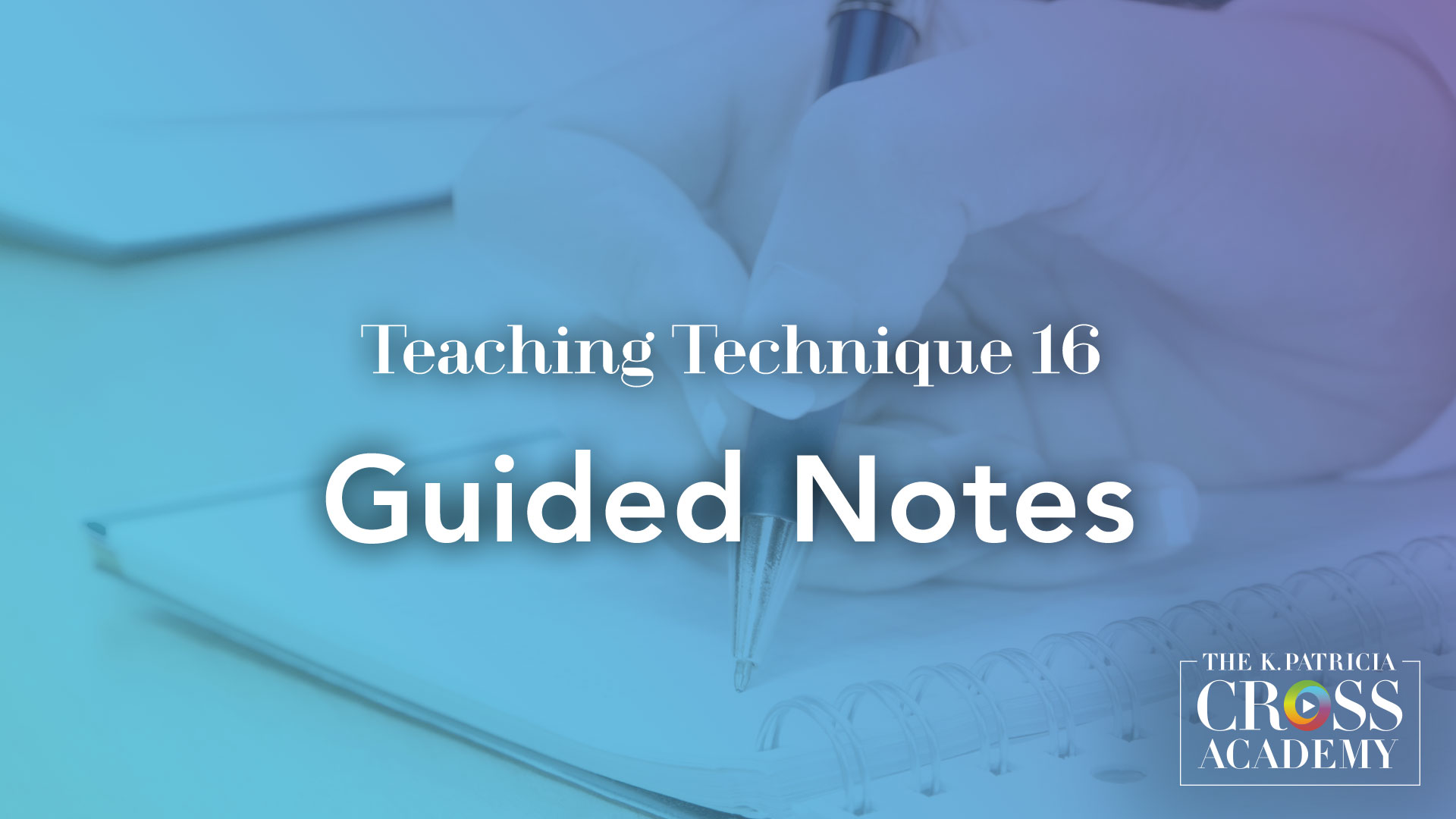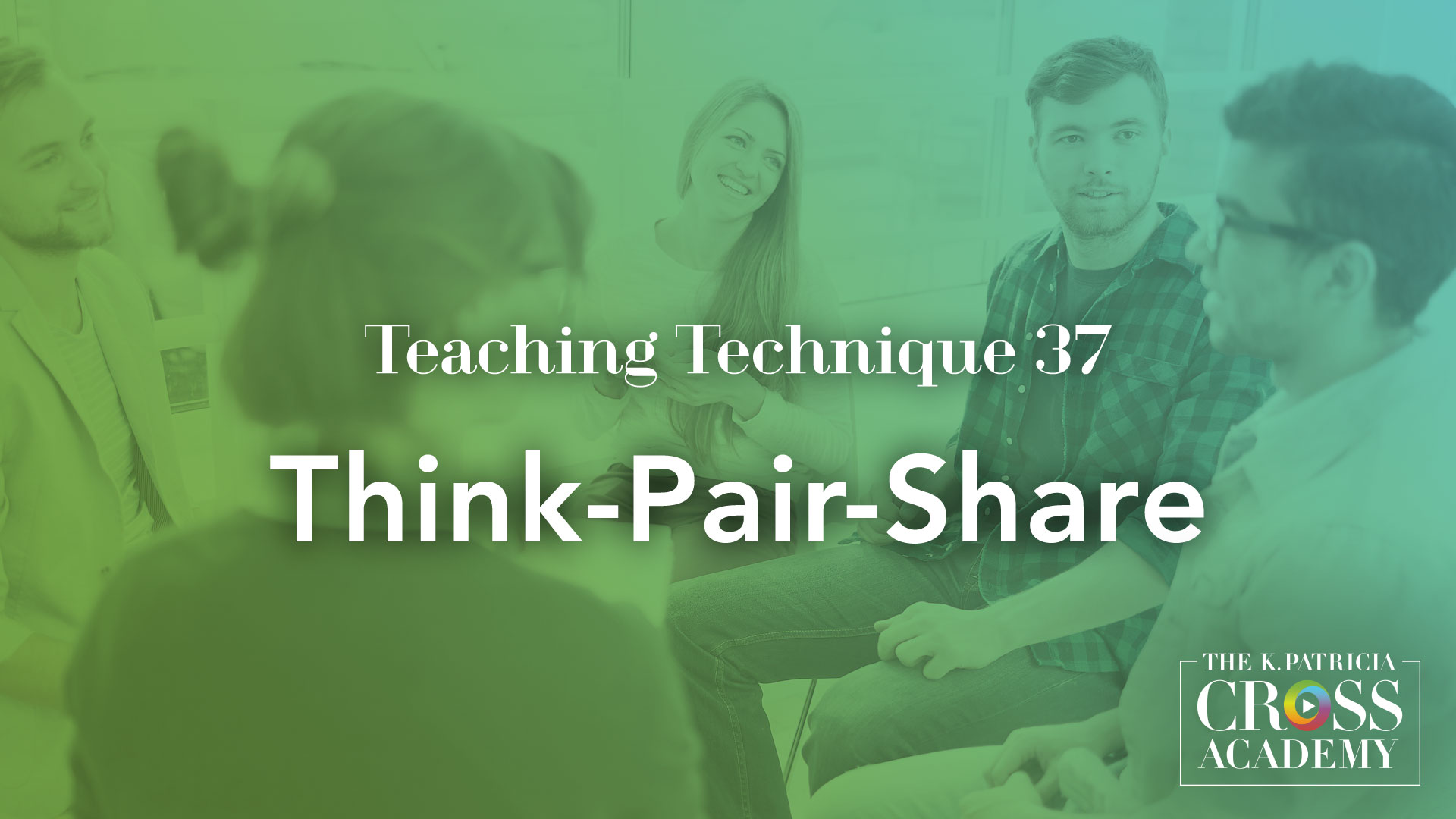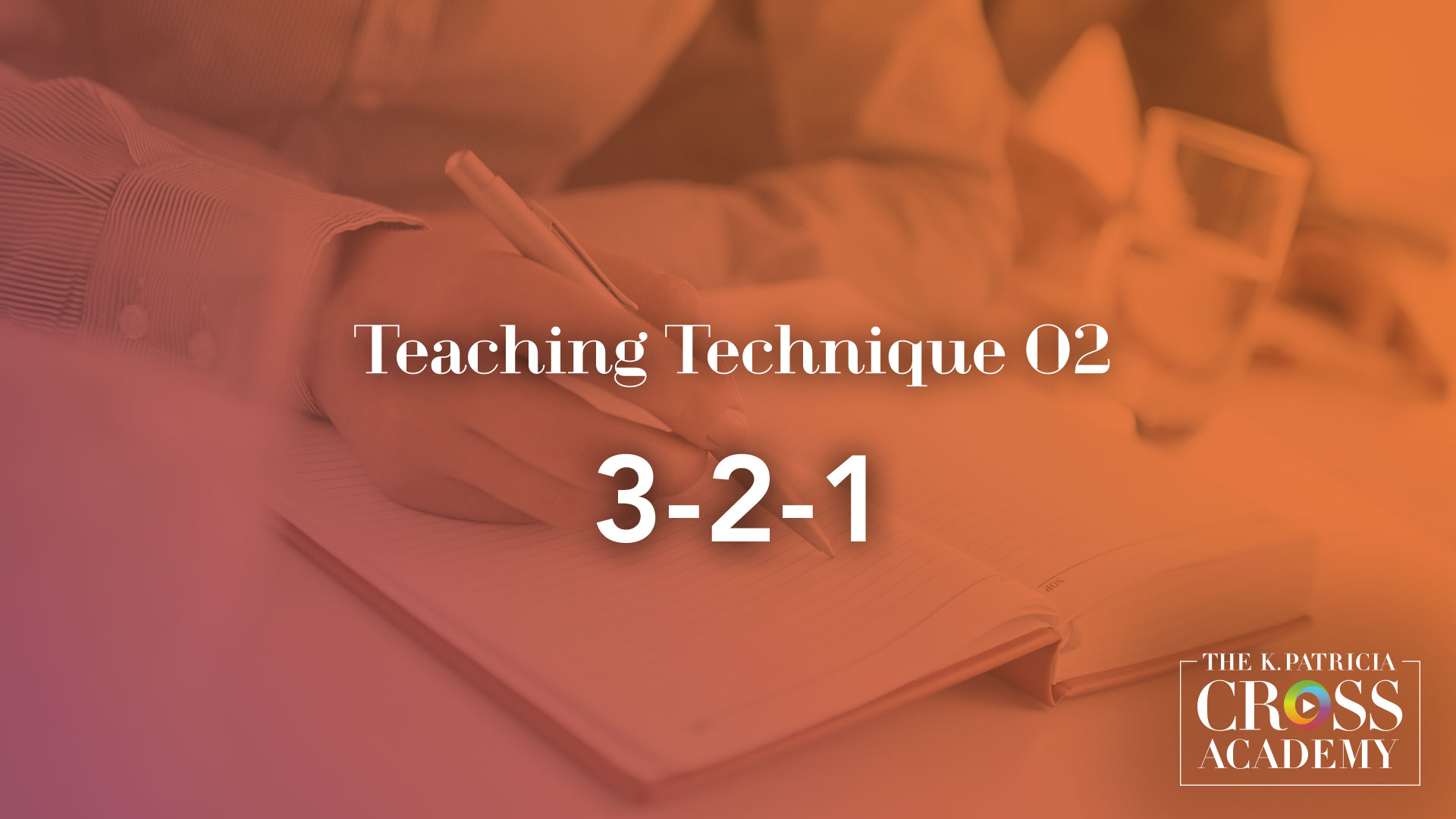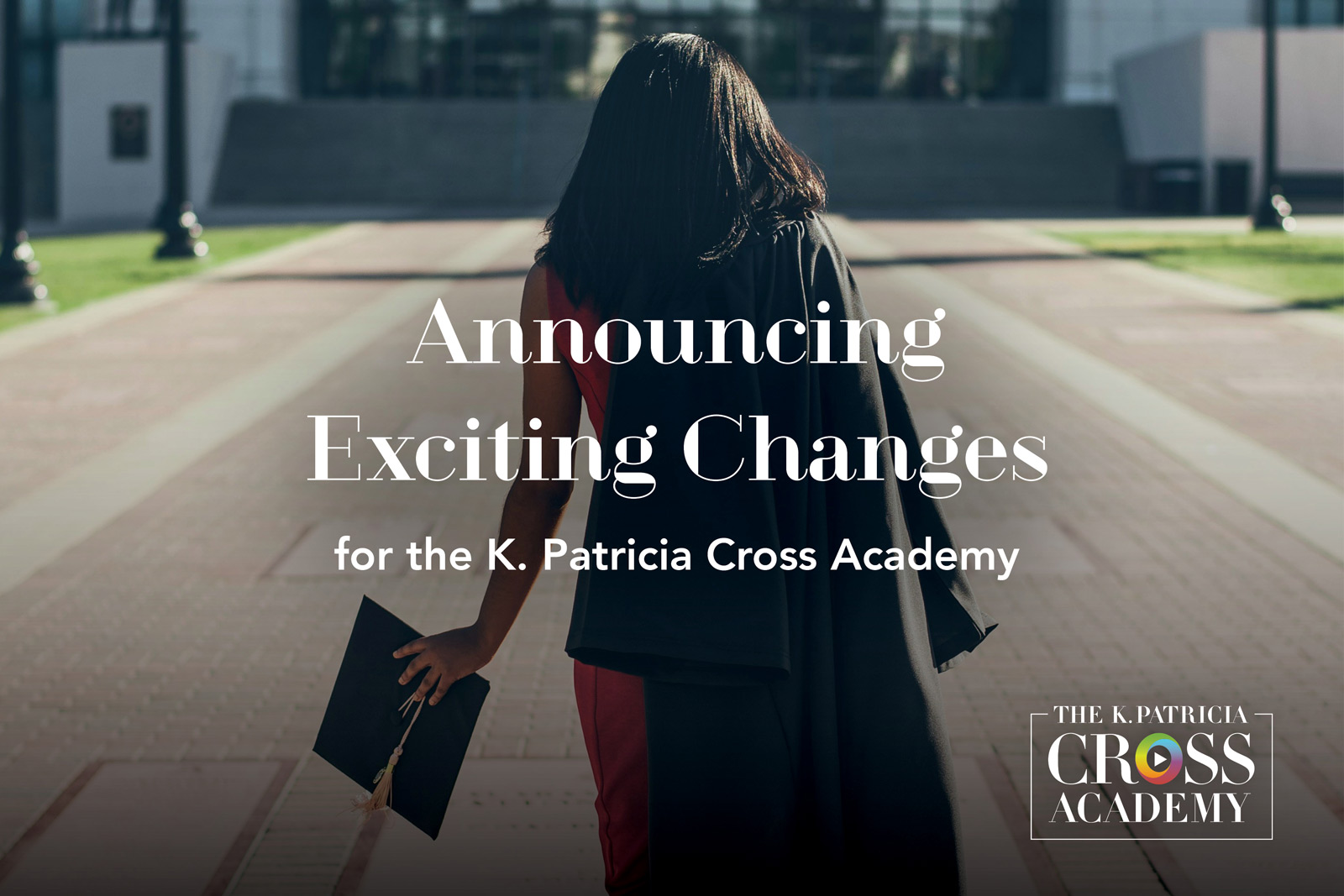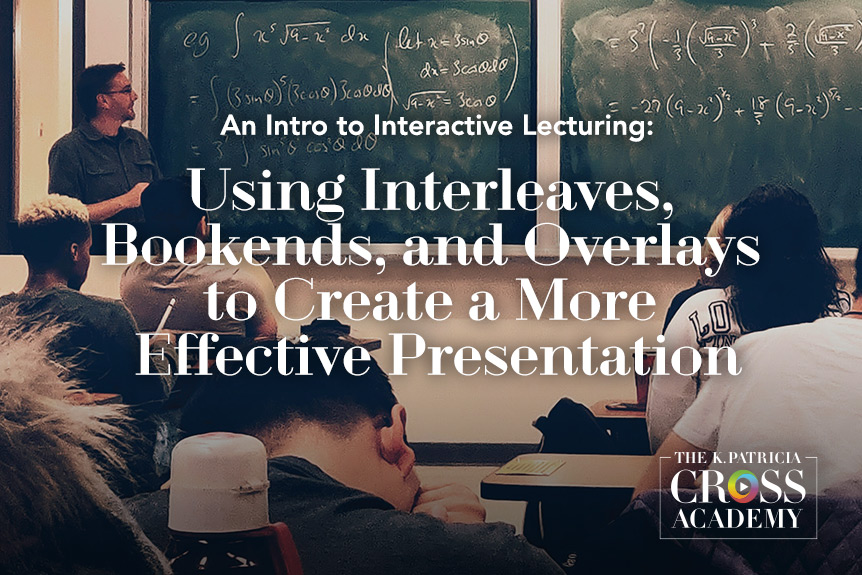
Teachers and students alike know that lectures can be boring. The following quip, widely attributed to Albert Camus, elegantly captures this sentiment; “Some people talk in their sleep. Lecturers talk while other people sleep.” Yet we – and students – have also experienced situations in which we sat mesmerized as we listened to an exceptionally captivating lecturer. While few of us possess the charisma that characterizes gifted speakers, there are concrete steps all of us can take to make our presentations better. In our book Interactive Lecturing, we proposed a model that combines crafting engaging presentations with choosing appropriate active learning methods for the purpose of helping students achieve the learning objectives.
Our interactive lecturing model is based on previously proposed models, but offers a more explicit method for combining engaging presentations and active learning techniques. During an interactive lecture, the class session is divided into presentation segments interspersed with student activity segments. Interactive lecturing provides students with a method for preparing for the lecture, a structure for active listening during the lecture, an opportunity to apply the lecture’s content, and an evaluation of their learning after the lecture.
Instead of merely “covering content,” faculty [can] create conditions that enable students to assume greater responsibility for their own learning.
Faculty who not only want or need to lecture but also seek to do more than passively transmit information can benefit from using the concept of interactive lectures as a framework for organizing their presentations. Rather than simply presenting content, instructors incorporate a well-planned, engaging presentation into a sequence of activities that helps students comprehend, process, apply, and retain new information. Instead of merely “covering content,” faculty create conditions that enable students to assume greater responsibility for their own learning. Thus, instructors can use interactive lectures to engage students in a structured and supportive learning environment, ensuring that students are active participants prior to, during, and after the lecture. Following is a figure illustrating our model.
Interactive Lecturing
Integrating engaging presentations and active learning techniques requires careful planning. Interactive lecturers strive to ensure that students are prepared for direct instruction and that the presentation is carefully situated and combined with active learning techniques.
Bookends, Interleaves, and Overlays offers one way to structure your class session to achieve the integrative structure of interactive lectures.
Main Idea
Incorporating learning activities into a lecture presentation that serve as Bookends, Interleaves, and Overlays can ensure that students remain engaged throughout the whole class period.
Bookends
Bookends are structures that are placed on either side of the presentation to help support the lecture (Smith, 2000; Smith, et al., 2005). A bookend may be placed before a presentation (such as through a preparation guide or online module) or it may come after a presentation (such as a summary or reflection exercise).
Overlays
Overlays are learning exercises used during the presentation to help students focus on the lecture topic. Overlays may include tactics that promote active listening or note-taking.
Interleaves
Interleaves entail rotating between lectures and active learning; therefore, interleaves occur between presentation parts to give students time to process. For instance, you may interleave presentations with brief pair conversations.
Example
In the following example, we demonstrate how to use Bookends, Overlays and Interleaves to structure a single 50-minute class session. We illustrate the use of 5 Techniques. In brief, they are
- Update Your Classmate. Students write a letter to a student, real or fictional, who missed class the day before to explain the missing information and its importance.
- Skeletal Notes. The instructor hands out a set of incomplete notes that students complete during the lecture.
- One-sentence Summary. At the end of the lecture, students summarize it in a single sentence.
- Real-world Applications. After hearing about an important principle, theory, or process, students develop real-world applications of what they have just learned.
- Lecture Wrapper. At the end of the lecture, students write what they think the three most important ideas of the lecture were on an index card. After they hand those in, the instructor reveals the three most important ideas from the lecture.
Following is an example schedule using bookends, overlays, and interleaves:
Bookends, Overlays, and Interleaves provide a way to support and extend presentations in ways that are geared toward improving student learning. They help students prepare for the lecture, offer a structure for active listening during the lecture, and an opportunity to apply the lecture’s content or evaluate their learning after the lecture. By structuring your class session using this framework, you can ensure that you are incorporating techniques to keep students active and engaged during a lecture presentation.
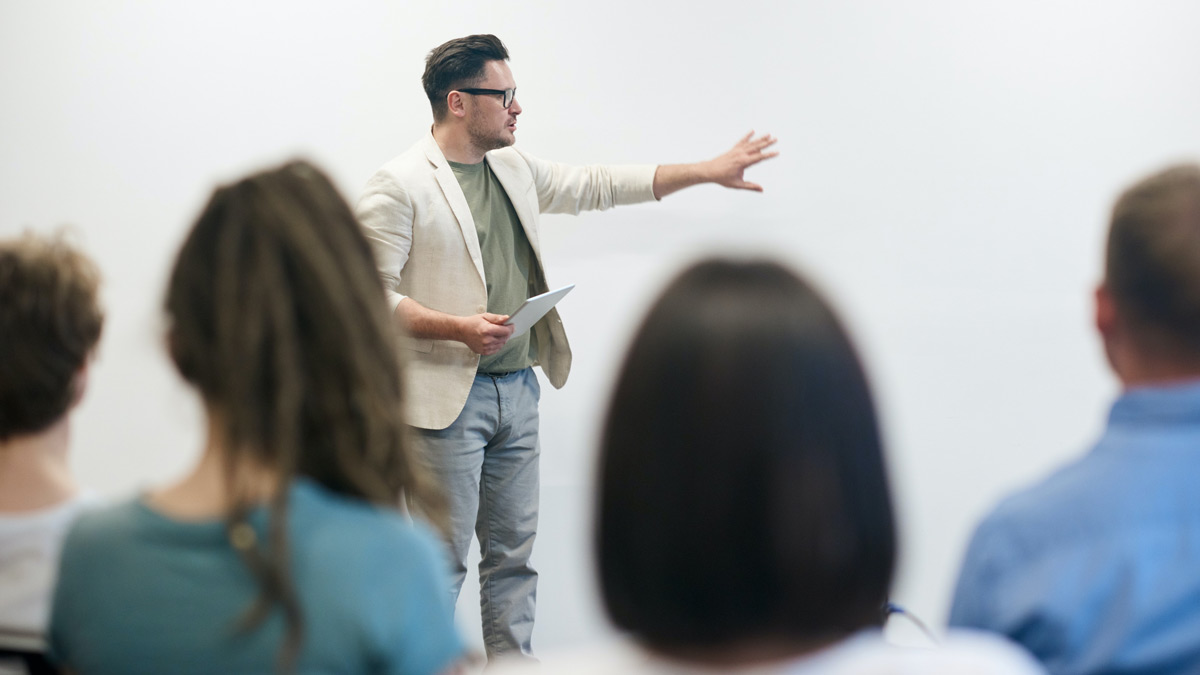
What are some Cross Academy Techniques that can be used as a Bookend, Overlay, or Interleave?
Most Cross Academy Techniques can be used either as is or with slight modification to provide the active learning segments in an interactive lecture. Here are four examples:
For Bookend One
A Background Knowledge Probe is a short, simple, focused questionnaire that students fill out at the beginning of a course or start of a new unit that helps teachers identify the best starting point for the class as a whole.
For an Overlay
In Guided Notes, the instructor provides a set of partial notes that students complete during the lecture, focusing their attention on key points.
For an Interleave
In a Think-Pair-Share, the instructor poses a question, gives students a few minutes to think about a response, and then asks students to share their ideas with a partner. Hence Think-Pair-Share.
For Bookend Two
In the 3-2-1 technique, students write about 3 things they learned in the lecture, 2 things they found particularly interesting from the lecture, and 1 question they still have about the lecture content.
Key Reference and Resources
Barkley, E. F., & Major, C. H. (2018). Interactive lecturing: A handbook for college faculty. Jossey Bass/Wiley.
Smith, K. A., 2000. Going deeper: Formal small-group learning in large classes, In J. MacGregor, et al. (eds). Strategies for energizing large classes: From small groups to learning communities, New Directions for Teaching and Learning, 81, 25-46. Jossey-Bass.
Smith, K. A., Sheppard, S. D., Johnson, D. W., and Johnson, R. T. (2005). Pedagogies of engagement: classroom-based practices. Journal of Engineering Education, 1–16.
Suggested Citation
Barkley, E. F., & Major, C. H. (n.d.). Using interleaves, bookends, and overlays to create a more effective presentation. CrossCurrents. https://kpcrossacademy.org/using-interleaves-bookends-and-overlays-to-create-a-more-effective-presentation/

Engaged Teaching
A Handbook for College Faculty
Available now, Engaged Teaching: A Handbook for College Faculty provides college faculty with a dynamic model of what it means to be an engaged teacher and offers practical strategies and techniques for putting the model into practice.

